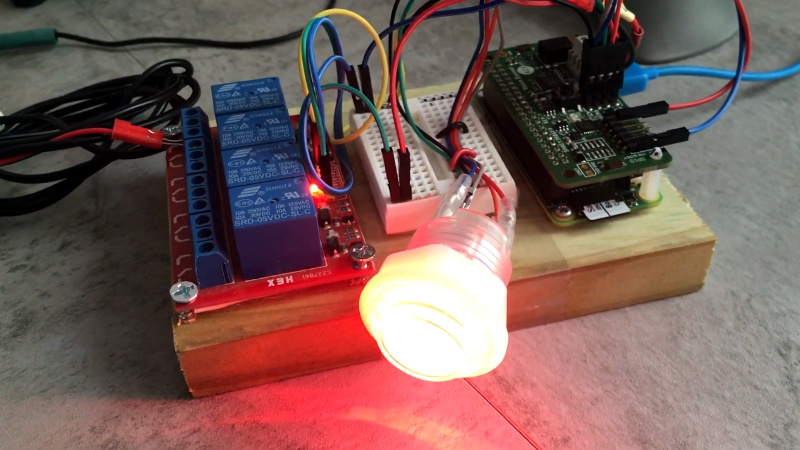Google has been responsible for unleashing some pretty incredible hardware and software on the world, but they can only take partial credit for the voice to Morse code gadget that [WhiskeyTangoHotel] recently completed.
With the Google AIY Voice Bonnet, [WhiskeyTangoHotel] had everything he needed to pick up on human speech and turn that into text the Raspberry Pi can parse and act on. Usually this would get passed to some kind of virtual assistant software, but in this case, a Python script breaks the speech down into individual characters and looks up their Morse representations. All those “dits” and “dahs” are then sent to one of the Pi’s GPIO pins, to which a relay has been connected.
At this point, you’ve got an interesting little toy that can sit on your desk and turn your speech into audible Morse code as the relay clicks and clacks its way through the message. In fact, if you don’t have a ham radio license, this is probably where you should stop. But if you’ve done the appropriate paperwork to transmit over the air, the relay can be connected to a radio to actually transmit messages.
If you think giving Google access to the content of your Morse code messages is a step too far, you’ll just have to learn it yourself. It might not be necessary to get your amateur license anymore, but that doesn’t mean it’s not worth knowing.
















Using the worlds cutting edge technology to emulate the first electrig/electronic transmission method. Curious
But transmitting morse code is the easier part, receiving it is the hard part.
_ ._. .._ .
How so?
because you can just write it out like this then send it.
-… . -.-. .- ..- … . / -.– — ..- / -.-. .- -. / .— ..- … – / .– .-. .. – . / .. – / — ..- – / .-.. .. -.- . / – …. .. … / – …. . -. / … . -. -.. / .. – .-.-.-
this font runs the dashes together though.
Attempting HTML5 style font formatting for better clarity, if there’s nothing below it didn’t work..
-… . -.-. .- ..- … . / -.– — ..- / -.-. .- -. / .— ..- … – / .– .-. .. – . / .. – / — ..- – / .-.. .. -.- . / – …. .. … / – …. . -. / … . -. -.. / .. – .-.-.-
Text came through but it stripped the tags.
Not sure if this will work either?? wvmn
Decoding transmitted CW/Morse Code is a more difficult task than transmitting CW/Morse, when we are discussing automated solutions, manually there are too many variables to make any kind of meaningful comparisons.
The ability to ‘speak’ CW/Morse Code could be useful for hams with certain physical challenges – day when Parkinson’s disease makes your ‘fist’ tremble to much to send manually.
Many elder hams are involved in CW/Morse nets, such a development could help them overcome some of the effects of aging.
As for Google knowing what you’re sending, just remember Amateur radio transmissions are openly available to anyone with a receiver.
The google problem in this instance, is that if your options are reduced to morse code for getting through in an emergency, where the heck is the internet connection coming from?
I want this!
https://www.youtube.com/watch?v=RdprKxOHfys
Oh, she’s too old for you now!
For a legacy project whose firmware I was asked to update, there was no output available to the user other than a beeper. So, on startup, the processor beeps the revision number of the FW in morse. I love seeing the reaction of people when they’re told the meaning of the beeps.
An SGI server we got a couple of decades ago would sound out SOS in morse, if it wasn’t booting properly.
Now if the dots and dash can be transformed to something that can be felt on one’s skin and you teach a deaf person how to read or feel morse code on their skin, you now have a speech-to-morse system that can translate conversations in almost realtime. This could allow the deaf person to at least listen in on the conversations going on around them.
The Apple Watch has an option to vibrate the watch time in Morse code. I use it all the time so I don’t rudely look at my watch to check the time during a meeting.